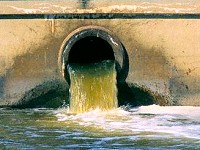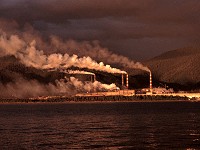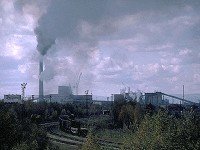| Origin & Development | |
|
Legends & Fairy tales • Earth's Crust Thickness • Underwater Relief • Landscapes • History & Formation • Seismic Activity • | |
| History of Lake Baikal | |
|
History of Explorations • Inhabitants & Settlers • First maps of Baikal • Archaeological Sites • | |
| Lake Baikal Climate | |
|
Introduction • Fogs • Winds & Waves • Ice Conditions • | |
| Fauna & Vegetation | |
|
Mammals • Baikal seal - Nerpa • Ichthyofauna • Invertebrates • Vegetation • | |
| Water of Lake Baikal | |
|
Colour • Transparency • Temperature • Pressure • Depth • Currents • Budget • Chemical Composition • Pollution • | |
| Recreational Areas | |
|
Circumbaikal Railway • Peschanaya Bays • Olkhon Island • Chivirkuysky Gulf • Wooden Irkutsk • Trans-Siberian Railway • | |
| People of Lake Baikal | |
|
People of Siberia • Buryat nation in Baikal • Russians in Baikal • | |
|
| |
Pollution of Baikal:
The Paper-and-Pulp Mill at Baikalsk has polluted the surrounding region and threatens the pristine conditions that have existed for centuries. The paper mill produces bleached cellulose that is used in clothing manufacture. The process, however, produces chemicals and effluent that threaten the more than 1,500 species unique to the lake. The success of Lake Baikal has been viewed as critical to other environmental efforts throughout the world. Plans for the paper mill at Baikalsk began in 1954. The public was informed in 1957; protests were held, and ignored. This pollution affects the bottom-dwellers of the lake as well, for Lake Baikal's waters are thoroughly mixed, with oxygen found even at the lowest depths. In addition, the Angara carries some of this pollution westward. Baikalsk releases chlorinated organics from the waste chemicals involved in pulp bleaching. These are of particular concern since they take centuries to biodegrade.
Pollution also occurs from the Selenga River. This tributary is the main inlet to Baikal, contributing almost one-half of Baikal's water inflow. Sediment and waste from three large Mongolian cities, as well as human and industrial wastes are carried by the Selenga. Thus far, the most noticeable effect has been decreased spawning rates for the omul, an endemic fish considered a delicacy. The coal-burning plants in Slyudyanka, furthermore, contribute to acid rain, which in turn further pollution in the lake. In April 1987, the Soviet government issued a decree to protect Lake Baikal. Mikhail Grachev, a molecular biologist, was appointed the director of the Institute for Limnology at Irkutsk in 1986, (the Siberian branch of the Soviet Academy of Sciences) and was directed to study Lake Baikal. In 1988 the Center for the Great Lakes Studies entered into a joint project with the Institute of Limnology. An international ecological center was instituted at Baikal in 1990. UNESCO (United Nations Educational, Scientific and Cultural Organization) is considering classifying Lake Baikal as a natural treasure of the world, which would then give it international protection.
If the pollution continues unabated, which is not foreseen, it may become more crucial. At particular risk are the Baikal seal and several species of endemic fish found no where else in the world, including the omul and the golomyanka. PRIBAIKALSKY NATIONAL PARK & NATURE PROTECTION SOCIETY on preserving natural environment and wild beauty of the Lake welcomes any proposals on improving ecological situation in Baikal please call: +7(3952) 467437; +7(3952) 467444 » more about pollution of lake Baikal |


